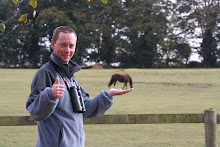I must admit that I am rather sceptical when it comes to the media and the weather, the recent 'Great Storm' being a classic. Although I knew it would be a very high tide, nothing prepared me for the sight of Snettisham on Saturday morning. I had to go to the site and assess the damage caused and make sure that any damage was safe. Despite the reserve being closed, I passed at least 30 people on my way onto the reserve. Maybe we should introduce reading to schools these days as it obviously wasn't taught in years past. The reserve closed signs had been put up for a reason!!

The pits full of water!!

This is the vehicle access. Its is going to be a while before this is open again



Inside Shore Hide. The water came though the hide and the pressure blew the lower front section off the hide. The water came halfway up the windows of the hide. Amazing to find footprints in the hide from people who had been using it!!! Words fail me.

This is the front of the Shore Hide with the hide in the background!!




Sanctuary Hide. This hide has been lifted up by the tide and turned 180 degrees and put back down on the shingle. Amazingly is seems to be undamaged but who knows how we are going to resolve this one!

What remains of the roost bank!


What remains of the roost bank!

Looking across the pits from the roost bank to the where Roost Hide should be....

All I could find of the Roost Hide was the covered steps. You can just see a bench from the wader watchpoint, several 100m away!

This is where Roost Hide used to be. Looking across the pit towards the roost bank.

The boardwalk is now floating in the pits and we assume most of the Roost Hide has sunk to the bottom. We will only find out once the water levels drop.

This is what the roost bank used to look like, compare to above...!

The infrastructure has taken a real battering. Its is going to take a fair few weeks for us to decide what the next steps are. In the meantime, please don't try to get into the hides and take photos of the destruction. Even though the water will eventually go down and allow people to get closer, the boardwalks and hides will be very unstable.
I certainly won't forget this December!!!!

All I could find of the Roost Hide was the covered steps. You can just see a bench from the wader watchpoint, several 100m away!

This is where Roost Hide used to be. Looking across the pit towards the roost bank.

The boardwalk is now floating in the pits and we assume most of the Roost Hide has sunk to the bottom. We will only find out once the water levels drop.

This is what the roost bank used to look like, compare to above...!

The infrastructure has taken a real battering. Its is going to take a fair few weeks for us to decide what the next steps are. In the meantime, please don't try to get into the hides and take photos of the destruction. Even though the water will eventually go down and allow people to get closer, the boardwalks and hides will be very unstable.
I certainly won't forget this December!!!!




































